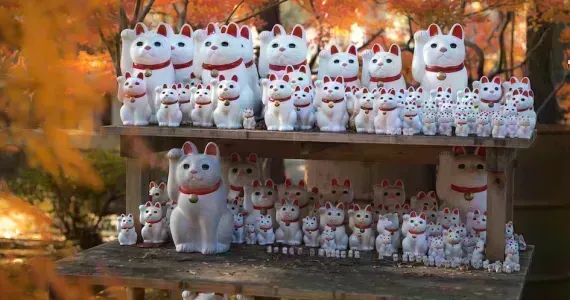Dragon Ball: The Legendary Manga and Anime Franchise
Dragon Ball is an iconic Japanese media franchise that has captivated audiences worldwide for decades. Created by Akira Toriyama in 1984, it follows the adventures of Son Goku from childhood to adulthood as he trains in martial arts and searches for the mystical Dragon Balls. With its blend of action, humor, and character development, Dragon Ball has become one of the most influential and beloved series in manga and anime history. Its impact extends far beyond Japan, inspiring countless fans and creators globally.
Origins and Creation of Dragon Ball
Dragon Ball originated from Akira Toriyama's desire to create a kung fu-inspired manga after the success of his previous work, Dr. Slump. Toriyama drew inspiration from the classic Chinese novel Journey to the West, as well as Hong Kong martial arts films, particularly those starring Jackie Chan and Bruce Lee. The series began serialization in Weekly Shōnen Jump in 1984, initially focusing on the young Goku's adventures but evolving into a more action-packed storyline as it progressed.
Toriyama's unique art style and storytelling approach set Dragon Ball apart from other manga of its time. He incorporated elements of science fiction, fantasy, and comedy into the martial arts genre, creating a rich and diverse world for his characters to inhabit. The addition of the Dragon Balls themselves - magical orbs that could grant wishes when gathered - provided a central plot device that would drive many of the series' story arcs.
Overview of the Dragon Ball Story and World
The Dragon Ball narrative spans several sagas, each building upon the last to create an expansive and intricate storyline. It begins with Goku's childhood adventures as he searches for the Dragon Balls alongside Bulma and other friends. As the series progresses, the stakes become higher, and the battles more intense. Key story arcs include:
- The search for the Dragon Balls
- Goku's training under Master Roshi
- The Red Ribbon Army saga
- The introduction of the Saiyans and Goku's alien heritage
- The battles against increasingly powerful villains like Frieza, Cell, and Majin Buu
The world of Dragon Ball is a unique blend of modern technology and fantastical elements. It features a diverse cast of characters, including humans with extraordinary abilities, aliens, anthropomorphic animals, and even gods. The series explores themes of friendship, personal growth, and the pursuit of strength, resonating with readers and viewers of all ages.
Key Characters and Concepts
Son Goku stands at the center of the Dragon Ball universe as its main protagonist. His journey from a naive young boy to Earth's greatest defender forms the backbone of the series. Other essential characters include:
- Bulma: A brilliant scientist and Goku's first friend
- Krillin: Goku's best friend and fellow martial artist
- Vegeta: Goku's rival and fellow Saiyan
- Piccolo: Former enemy turned ally
- Gohan: Goku's son, who plays a pivotal role in many story arcs
Key concepts in the series include the Super Saiyan transformation, which allows Saiyans to reach new levels of power, and the use of ki energy for various techniques like the iconic Kamehameha wave. The series also introduces the concept of multiple universes and gods of destruction, expanding its scope beyond Earth and even the known universe.
Dragon Ball Manga Series
The Dragon Ball manga, written and illustrated by Akira Toriyama, ran from 1984 to 1995 in Weekly Shōnen Jump. It was originally collected into 42 tankōbon volumes, which have since been re-released in various formats. The manga's success led to its division into two parts for international release: Dragon Ball, covering the earlier adventures, and Dragon Ball Z, focusing on the later, more action-heavy arcs.
Toriyama's art style evolved throughout the series, becoming more refined and dynamic as the story progressed. His ability to balance action, comedy, and character development made the manga a standout in the shōnen genre. The manga has sold over 260 million copies worldwide, making it one of the different genres of manga to achieve such massive success.
Dragon Ball Anime Adaptations
The popularity of the Dragon Ball manga led to multiple anime adaptations, each contributing to the franchise's global success:
- Dragon Ball (1986-1989): Covering the early parts of the manga
- Dragon Ball Z (1989-1996): Adapting the later, more action-focused arcs
- Dragon Ball GT (1996-1997): An original story created after the manga's conclusion
- Dragon Ball Kai (2009-2011, 2014-2015): A remastered, more manga-faithful version of Dragon Ball Z
- Dragon Ball Super (2015-2018): A continuation of the story set after the defeat of Majin Buu
These anime series have played a crucial role in popularizing Dragon Ball internationally. The dynamic fight scenes, memorable characters, and emotional storytelling have made them fan favorites for decades. The series have also spawned numerous movies, OVAs, and special episodes, further expanding the Dragon Ball universe.
Global Impact and Cultural Influence
Dragon Ball's influence extends far beyond the realm of manga and anime. It has become a global cultural phenomenon, impacting entertainment, sports, and even everyday language. Its influence can be seen in:
- Other manga and anime series, many of which draw inspiration from Dragon Ball's storytelling and action sequences
- Western cartoons and comics, which have adopted elements of Dragon Ball's style and themes
- Video games, with numerous Dragon Ball titles across various platforms
- Sports and fitness, with athletes often referencing the series as inspiration
- Pop culture references in music, movies, and television
The series has also played a significant role in popularizing anime and manga in Western countries, serving as a gateway for many fans into Japanese popular culture. Its themes of perseverance, friendship, and self-improvement have resonated with audiences worldwide, contributing to its enduring popularity.
Dragon Ball's Legacy and Ongoing Popularity
Decades after its initial release, Dragon Ball continues to captivate new generations of fans. Its legacy is evident in the ongoing production of new content, including the recent Dragon Ball Super series and movies. The franchise has expanded to include:
- A vast merchandise empire, including action figures, clothing, and collectibles
- Themed attractions and events, such as the Toretore Village in Japan
- Collaborations with other brands and franchises
- Continued exploration of the Dragon Ball universe through new manga and anime projects
The enduring popularity of Dragon Ball is a testament to its universal themes and compelling storytelling. It continues to inspire fans and creators alike, ensuring its place as a cornerstone of manga and anime culture. For those interested in experiencing the world of Dragon Ball firsthand, consider exploring Japan with our Between Manga and Tradition tour or other Self-Guided Tours in Japan.
As Dragon Ball approaches its 40th anniversary, its impact on popular culture shows no signs of diminishing. From its humble beginnings as a manga series to its current status as a global media franchise, Dragon Ball has truly become a legendary part of entertainment history.




























